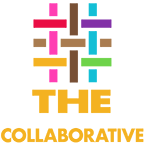About Us
The Training & Health Equity (THE) Collaborative is committed to increasing equitable and accessible healthcare. We provide capacity building, technical assistance, and training to healthcare organizations in the West region. Our programs include the Pacific AIDS Education and Training Center, Alameda County Care Connect, and the Care and Wellbeing Center, all centered in health equity and anti-oppression.
Our Vision
We envision a healthcare system that is accessible, responsive, culturally affirmative, centered in social justice and health equity, where the lessons of HIV and chronic care are fully integrated into patient- and community-centered models. A system where providers have access to the most relevant, current and accurate information and the skills to implement change that meet the needs of their patient populations.
Our Mission
Our goal is to provide capacity building services that support local priorities to improve systems of care.
Our Core Values
Interdisciplinary;
Community-engaged;
Culturally affirmative;
Aligned with regional efforts;
Centered in social justice.
THE Collaborative Timeline
Our work in social justice is grounded in the collective history of our communities and all who have come before us. We honor the struggles, the advocacy, the strengths, the resilience and the progress they left for us to build upon.
"The Arc of the Moral Universe is Long, but it Bends Toward Justice"
- Dr. Martin Luther King Jr.
-
1400-1799
1400-179914oos: The first European colonizers arrived in what is now the US, beginning relationships detrimental to indigenous communities
1542?: Indigenous child kidnapped by Florentine explorers/ colonizers-kidnaping/ murder of indigenous children & women continues to this day
1619: More than 20 enslaved Africans are kidnapped and taken to Virginia, opening a new chapter of slavery
1776: The Declaration of Independence is signed, marking the birth of the United States as a nation.
1778-1780: An estimated 1 in 17 Native Hawaiians died within 2 years of Captain Cook’s arrival
1778-79: Captain Cook arrives in Hawaii and dies in Hawaii, bringing STIs & other infectious diseases
140017991400-1799 - 1400-1799
The first European colonizers arrived in what is now known as the United States. Colonizers brought old world diseases not previously present in the Americas and began the institutionalization of slavery of Africans and Indigenous people.
-
1800-1899
1800-18991800: The Native Hawaiian population had declined an estimated 48% since Captain Cook’s arrival
1814: The Creeks cede more than 20 million acres of land after the Battle of Horseshoe Bend.
1819: Whalers arrive in Hawaii-opening the central Pacific as whaling grounds, bringing more STIs
1820: American Protestant missionaries arrive in Hawaii, also bringing Western physician to serve commoners (alii/ nobles/bad physicians earlier)
1820: The Native Hawaiian population had declined an estimated 71% since Captain Cook’s arrival
1830: Indian Removal Act was signed into law, forcing thousands of Native Americans to relocate, in what became known as the Trail of Tears
1835: First plantation in Koloa, Kauai
1840: The Native Hawaiian population had declined an estimated 84% since Captain Cook’s arrival
1845: Texas is annexed by the US
1846-48: Mexican American War, US gains control of current-day southwestern states
1848: The “Great Mahde” disposes many Hawaiians of access to land
1848: Measles, pertus, and influenza arrive and spread in Hawaii, 10-33% of the population died
1851: US passes the Indian Appropriations Act, creating the Indian reservation system
1852: Publication of Uncle Tom’s Cabin by Harriet Beecher Stowe
1852: First imported contract laborers arrived in Hawaii from Xiamen, China. Later groups were brought from Japan, Portugal, & Philippines
1854: People v. Hall determines that Chinese people cannot testify against white defendants
1862: Lincoln makes California’s ‘coolie trade’ ban national
1863: Abraham Lincoln issues the Emancipation Proclamation
1865: Juneteenth (short for June 19th) marks the day when federal troops arrived in Galveston, Texas in 1865 to take control of the state and ensure that all enslaved people be freed
1882: Chinese Exclusion Act
1898: The Supreme Court upholds birthright citizenship in United States vs. Wong Kim Ark
1898: Spanish American War, US gains control of Guam, Puerto Rico, and Philippines. Hawaii is annexed during the war
180018991800-1899 - 1800-1899
Indigenous people continue to be massacred as the U.S. government seizes land and expands control of more territory. The U.S. continues to import people from African and Asian countries as slaves and laborers. Although the Emancipation Proclamation later passed in 1863, this era is marked by much U.S. legislation that further institutionalizes the dehumanization of all non-white people as property.
-

1900-1949
1900-19491907: Charles Curtis becomes the 1st Native American US Senator and VP under Hoover
1907: The Bellingham Riots, Sikh immigrant lumber workers attacked by nativist Asian Exclusion League
1909: The National Association for the Advancement of Colored People is formed
1917: Immigration Act, banning the entry of labor migrants from Asia
1921: Tulsa race massacre-“Black Wall street” endured 2 days of attacks by white mobs resulting in 300 dead, 10,000 left homeless, and 1,400 businesses destroyed
The Well of Loneliness, by Radclyffe Hall, is published in the US, bringing the topic of homosexuality to public
Blues singer Ma Rainey is arrested in her house in Harlem for having a lesbian party
Henry Gerber forms the Society for Human Rights, the first gay group in the US, but is quickly shut
1924: Congress creates the Border Patrol, as part of the Department of Labor’s Immigration Bureau
1924: US passes the Indian Citizenship Act, granting citizenship to all Native Americans born in the territorial limits of the US
1926: Woodson establishes Negro History Week in the US
1928: Octaviano Ambrosio Larrazolo of New Mexico is sworn in as the first Hispanic senator

1936: African American Jesse Owens wins 4 gold medals at the Berlin Olympics

1942: The U.S. and Mexico sign the Mexican Farm Labor Agreement, called the Bracero Program, America’s biggest guestworker program created to avoid labor shortages
1942: Executive Order 9066 signed and issued, forcing 120,000 Japanese Americans into internment camps
19001949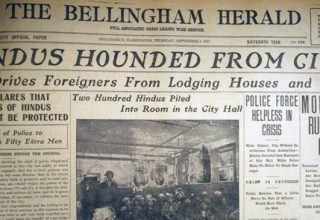
1900-1949 - 1900-1949
Racial oppression escalates across the U.S., notable marked by the “Black Wall Street” Tulsa Race Massacre of 1921 and later the Executive Order 9066 of 1942, forcing 120,000 Japanese Americans into Internment Camps. Activism also heightens during this decade in response to ongoing violence, and the National Association for the Advancement of Colored People (NAACP) is formed in New York City in 1909. The Harlem Renaissance, a blossoming movement of African American intellectual, cultural, and artistic activity begins around 1920. In a step forward, Native Americans born within the territorial limits of the U.S. are granted citizenship through the Indian Citizenship Act in 1924.
-
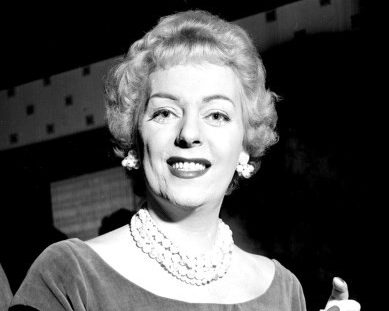
1950-1959
1950-19591952: Christine Jorgensen is the first American who comes forward publicly about being transgender
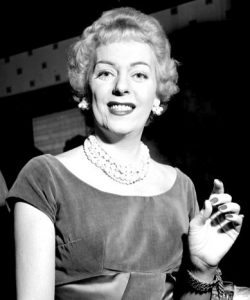
The first lasting gay organization, the Mattachine Society, is formed in LA, referring to themselves as a “homophile”
Man residing in Africa dies of an illness, later confirmed to be HIV
1954: US Supreme Court had outlawed segregation in public education in a landmark case (Brown v Board of Education)
1954: US institutes “Operation Wetback,” a controversial mass deportation, in which the US rounds up more than 1 million people
1954: In Hernandez v. State of Texas, US Supreme Court rules that MexicanAmericans have equal protection under the law
1955: Rosa Parks starts the Montgomery bus boycott
1956: James Baldwin publishes his first novel, Giovanni’s Room, a critically acclaimed work that explores bisexuality and intimacy between men
1955: The Daughters of Bilitis (DOB), considered to be the first lesbian rights organization, is formed by Del Martin and Phyllis Lyon in SF
19501959
1950-1959 - 1950-1959
Despite some legislative effort towards racial and social progress, including the Supreme Court’s landmark Brown v. Board of Education decision, people of color still face institutional segregation, discrimination, and disenfranchisement throughout the U.S. The civil rights movement begins, kickstarted by Rosa Parks in the 1955 Montgomery bus boycott. This decade is also marked by Christine Jorgenson, the first American to come forward publicly about being transgender and Daughters of Bilitis, the first lesbian rights organization formed in San Francisco. A man residing in the Congo dies of an illness in 1959, later confirmed to be the first case of HIV.
-

1960-1969
1960-1969African American teenager in St. Louis dies of AIDS like symptoms
Gay men in US and Sweden, and heterosexual men in Tanzania and Haiti, begin showing signs of what will later be called AIDS.
1962: Illinois becomes the first U.S. state to remove sodomy law from its criminal code
1963: Bayard Rustin, noted civil rights activist and gay man, is the chief organizer behind the historic March in DC
The first gay rights demonstration in the USA takes place at the Whitehall Induction Center in NYC, protesting against discrimination in the military
Martin Luther King delivers his landmark “I Have a Dream” speech in Washington
Bomb attack on a black church in Birmingham kills four girls.
1964: The Civil Rights Act is enacted
1965: The Voting Rights Act is passed
Immigration and Nationality Act (Hart-Cellar Act) abolishes “national origins” allocating immigration quotas — Asian countries now on an equal footing with others for the first
1966: Compton Cafeteria riot occurred in the Tenderloin neighborhood of San Francisco, in response to the violent and constant police harassment of drag queens and trans people, particularly trans women
1966: Black Panther party is formed by Huey Newton and Bobby Seale in California
1967: Loving v Virginia, US Supreme Court rules that laws banning interracial marriage violate equal protection & due process clauses
1967: Thurgood Marshall, sworn in as the first African American on the Supreme Court
1968: Hispanic Heritage Week is created
1968: Martin Luther King is assassinated in Memphis
1968: The Indian Civil Rights Act is signed into law, granting Native American tribes many of the benefits included in
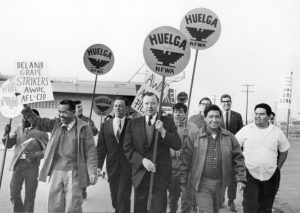
1969: Stonewall Riots took place in NYC, after police raided the Stonewall Inn, a gay bar located in Greenwich Village
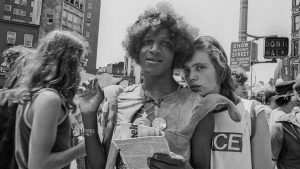
Delano Grape labor strike, started by Filipinos and joined by Mexican farmworkers
19601969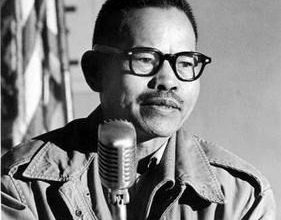
1960-1969 - 1960-1969
The U.S. civil rights movement gains momentum, marked by the historic 1963 March on Washington and Dr. Martin Luther King’s “I have a dream” speech. U.S. Congress enacts two landmark legislations, The Civil Rights Act and the Voting Rights Act. In addition, the first gay rights demonstration takes place in NYC, protesting discrimination in the military. In the background, more people become symptomatic and die from mysterious diseases we now know were opportunistic infections caused by HIV/AIDS.
-

1970-1979
1970-19791970: The first “Gay Liberation Day March” is held in NYC
1970: Marsha “Pay It No Mind” Johnson and Sylvia Rivera are co -founders of Street Transvestites Action Revolutionaries (STAR)
1970 (c): The HIV virus jumped from the Caribbean to the US around 1970 and triggered the country’s AIDS epidemic of the 1980s
1970: Title X was created to provide affordable birth control and reproductive health care to people with low incomes, who couldn’t otherwise afford these services on their own.
1972: Dolores Huerta, labor and civil rights activist coins, ‘ Si Se Puede.’
1972: Title IX of the Education Amendments prohibits sex discrimination in all aspects of education programs that receive federal support.
1973: APA removes homosexuality from its official list of psychiatric disorders, the DSM-II
1973: Landmark Supreme Court ruling Roe v. Wade makes abortion legal.
1976: Negro History Week becomes Black History Month
1976: Executive Order 9066 is rescinded
1977: Harvey Milk becomes the first openly gay person to be elected to public office in CA
1978: Asian-Pacific Heritage Week proclaimed
19701979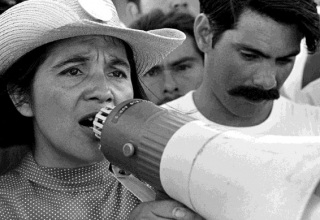
1970-1979 - 1970-1979
Civil and gay rights movements continue to break new ground in this era, beginning with the first gay rights march held in NYC. Activists Marsha P. Johnson and Sylvia Rivera co-found the first activist organization for transgender people, and Harvey Milk becomes the first openly gay person to be elected to public office. Negro History Week becomes Black History Month, and Asian-Pacific Heritage Week is proclaimed. A recent 2016 genetic study reveals the HIV virus enters the U.S. population around 1970, 10 years before it was discovered by medical scientists.
-

1980-1989
1980-19891980: Democrats are the first political party to add “gay rights” to their platform during the DNC
Human Rights Campaign is founded

1981: NY Times publishes story on “rare and fatal cancer” in gay men in NY and CA
First cases of pneumocystis carinii and KS are reported in NY and CA
1981: First weekly support group for people with KS begins at SFbased, Shanti
1982: After being called GRID, the disease is renamed, AIDS
National Association of People with AIDS is formed

1983: Discovery of the virus that causes AIDS
CDC begins tracking AIDS infections by race
First AIDS case is reported in Africa
First woman in the world is diagnosed with AIDS in SF
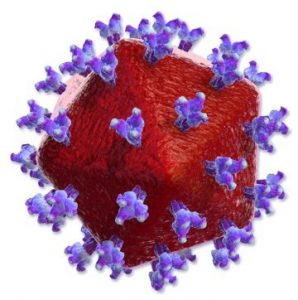
1984: FDA approves first HIV anti-body test
First panel of HIV/ AIDS Memorial quilt created
1985: First Black AIDS organizations founded: Bebashi in Philadelphia; Black and White Men Together in SF; MAP in LA.
President Reagan mentions AIDS for the first time
Ryan White, an Indiana teenager with AIDS, is barred from school
1st International AIDS Conference held in Atlanta
1st first HIV antibody test developed
The first memorial to the Nazi’s gay victims is unveiled at the Neuengamme concentration camp
1986: AZT becomes first antiHIV drug approved by FDA
First Black AIDS Conference
Outreach, Inc. in Atlanta to outreach in black neighborhoods. It’s the oldest HIV/AIDS CBO in the south, and focusing on IDUs.
Immigration Reform and Control Act imposes penalties on employers who knowingly hire undocumented people
1987: The AIDS Education and Training Center (AETC) Program is established. Watch this video to learn more about the AETC network’s 35 years of supporting the HIV care community.
ACT UP is founded in NYC
AIDS Quilt displayed for the 1st time
US shuts its doors to HIV -infected immigrants and travelers
National Minority AIDS Council is formed
Asian Pacific American Heritage Week is established
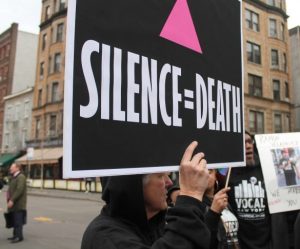
1988: First CDC Grant for HIV Prevention for Black Men
AIDS rate skyrockets in Black Women
WHO declares December 1st as the first World AIDS Day
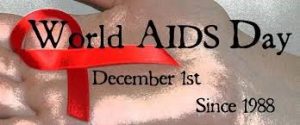
Hispanic Heritage Week becomes Hispanic Heritage Month
1989: Sisterlove, Inc. is founded in Georgia, focusing on women
 19801989
198019891980-1989 - 1980-1989
HIV reaches public attention in this decade. The disease, first noticed in gay men, galvanized a community response and activism due to the inattention and inaction of the U.S. government to GRID (Gay-Related Immune Deficiency as AIDS was initially named). Groups like ACT UP forced government to engage with community and together with Community-Based Organizations and AIDS Service Organizations, helped leave a lasting imprint on the healthcare landscape. Sadly, HIV stigma and discrimination also entered our collective consciousness, through high-profile cases like a teenager with AIDS named Ryan White, who was barred from attending school in Indiana. The WHO declares December 1st World AIDS Day in 1988.
-

1990-1999
1990-19991990: HOPWA Act passes
Americans with Disabilities Act enacted
Ryan White Care Act enacted
Ryan White dies at age 18

American Indian Week started in 1986 becomes Native American Heritage Month
A/PA Heritage Week becomes Asian American and Pacific Islander Heritage Month
1991: FDA licenses first rapid HIV test
Magic Johnson announces he is HIV+
Red Ribbon Project created
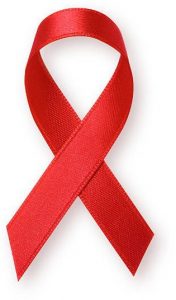
1992: CDC revises definition of AIDS to be more inclusive of women and IDUs.
1993: HIV Becomes Leading Cause of Death For Young Black Men & Women
Tennis star Arthur Ashe dies of AIDS
Carol Moseley Braun is the first African American woman to serve as U.S. senator
1994: Dr. Helene Gayle is named the director of the newly created National Center for HIV, STD and TB Prevention
AZT reduces Mother-to-Child transmission
FDA approves first oral test for HIV (OraSure)
HIV Positive Woman On Cover of Essence
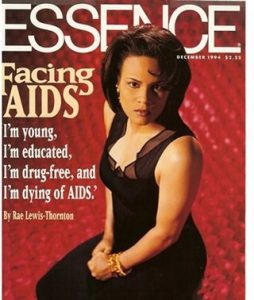
1995: Rapper Eric Wright, aka Eazy-E, dies of AIDS
Olympic diver Greg Louganis announces he is living with HIV

1996: HAART becomes the standard of HIV care
Cover Stories About the “End of AIDS”
Dr. Ho is named Time magazine’s “Man of the Year”
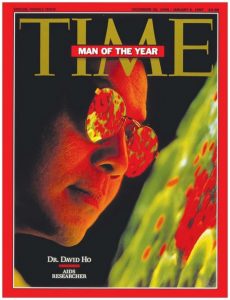
1997: Ellen becomes the first television show to feature a lesbian or gay lead character
1998: Minority AIDS Initiative created
Clinton refuses to fund needle exchange programs
Ricky Ray Hemophilia Relief Fund authorizes payments to hemophiliacs infected with HIV through unscreened blood-clotting agents
Tammy Baldwin became the first openly lesbian elected to Congress
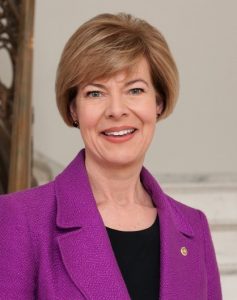
1999: Black AIDS Institute Founded
AIDS activist Reggie Williams dies
First National Black HIV/AIDS Awareness Day
19901999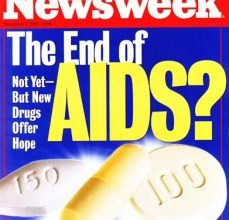
1990-1999 - 1990-1999
This decade continues to challenge the stigma around HIV and misconceptions about how it is spread and who can contract it. Ryan White passes away at age 18 in 1990 and the Ryan White Care Act is enacted. Notable figures such as athletes Magic Johnson and Greg Louganis announce they are living with HIV, and the first HIV Positive Woman is featured on the cover of Essense Magazine. In 1992, the CDC revises AIDS to be more inclusive of women and IDUs. By 1993, HIV becomes the leading cause of death for young black men and women. HAART (highly active antiviral therapy) is introduced to treat HIV in 1996, which drastically reduces the morbidity and mortality of those living with HIV and offers hope for living “normal” lifespans. The Minority AIDS Initiative is created in response to growing concern about the impact of HIV on racial and ethnic minorities in the U.S. In 1999, the Black AIDS Institute is founded and the first National Black HIV/AIDS Awareness Day held.
-

2000-2009
2000-20092000: US Global AIDS and TB Relief Act authorizes up to $600 million for global efforts
Nonoxynol-9 is found to increase risk of HIV transmission
2001: Doha Declaration affirms the rights of developing countries to buy or manufacture generic medications to meet public health crises such as HIV/AIDS
2002: Rapid HIV Blood Test Approved by FDA
Global Fund to Fight AIDS, Tuberculosis, and Malaria is created
2003: President’s Emergency Plan for AIDS Relief (PEPFAR), committing $15 billion. Provision gives a third of USAID’s prevention funding to abstinence programs.
The US Supreme Court overturns sodomy laws, proclaiming rights to privacy and decriminalizing “homosexual” behavior
1st US National Latinx AIDS Awareness Day is observed

2004: Rapid Oral Test Approved by FDA
Massachusetts becomes the first U.S. state to legally recognize same-sex marriage
2005: 1st US Annual National Asian and Pacific Islander HIV/AIDS Awareness Day
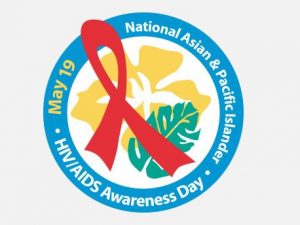
WHO, UNAIDS, the US Government, and the Global Fund to Fight AIDS, TB & Malaria announce results of joint efforts to increase the availability of antiretroviral drugs in developing countries
Hurricane Katrina in New Orleans throws into bold relief the problems of class, race, and the persistent legacy of slavery in the US
2006: CDC recommends routine HIV testing in health care settings for people aged 13-64
1st US Annual National Women and Girls HIV/ AIDS Awareness Day
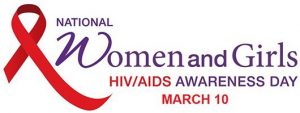
Kim Coco Iwamoto, the first openly transgender person to be elected to a state level office, is elected to the Hawaii Board of Education

2007: In October, the CDC launch Prevention IS Care (PIC), a social marketing campaign designed for healthcare providers who deliver care to people living with HIV
1st US National Native HIV/AIDS Awareness Day is observed
2008: First US Annual National Gay Men’s HIV/ AIDS Awareness Day

2009: Matthew Shepard and James Byrd, Jr. Hate Crimes and Prevention is signed into law, expanding federal hate crimes motivated by a victim’s sexual orientation or gender identity and becoming the first federal law to include legal protections for transgender people
US lifts federal ban on needle exchange programs
Sonia Sotomayor is sworn in as the first Latinx Supreme Court justice
20002009
2000-2009 - 2000-2009
The turn of the millennium brought numerous strides, specifically for women, people of color, the LGBTQIA2S+ community, and substance use destigmatization. More resources are mobilized to address the HIV epidemic globally and to build awareness to HIV health disparities locally. These resources led to the development of vital HIV screening tools, educational campaigns, and numerous Awareness Days.
-

2010-2020
2010-20202010: Federal budget eliminates funding for abstinence-only sex education
US releases travel ban on HIV+ people
Affordable Care Act Signed Into law
2011: US announces goal of an AIDS-free generation
HHS launches the “12 Cities Project,” focusing resources on areas with the highest US AIDS burden
US issues first National HIV/ AIDS Strategy
NIH publishes a study that says taking antiretroviral drugs leads to a reduction in HIV transmission to an uninfected heterosexual partner
US reinstates ban on federal funding for needle-exchange programs
The trial of a microbicide gel, CAPRISA 004, shows that it reduces the risk of a woman becoming infected with HIV during sex by almost 40%.
US military policy “Don’t Ask, Don’t Tell” officially end
US Dept. of Education clarifies that students have the right to form gay-straight alliances (GSAs) under the Equal Access Act of 1984
2012: OraQuick In-Home HIV Test approved
FDA approves Truvada to be used as PrEP to reduce the risk of sexually-acquired HIV infection
CDC Releasing $339 Million to Power “High-Impact” HIV Prevention

2013: HIV Care Continuum initiative
UNAIDS reports AIDS-related deaths down 30 percent since their peak in 2005
First National Youth HIV & AIDS Awareness Day
Black Lives Matter movement forms
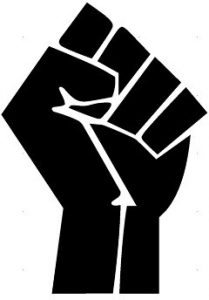
CA & NJ are the 1st states to ban conversion therapy for minors
The Defense of Marriage Act, a law that prohibited same-sex couples from receiving federal marriage benefits, is overturned. On the same day, California’s Prop 8 is overturned, making California the 13th state to allow same-sex marriage.
2014: CDC PrEP Guidelines released
Updated National HIV/ AIDS Strategy
AIDS Conference was held in Melbourne, with the slogan ‘Stepping Up the Pace’
US Dept of Education clarifies that transgender students are protected from discrimination under Title IX
Austin City Council approves ordinance for single stall bathrooms to be recognized as gender neutral
Say their name: Eric Garner; Tamir Rice
2015: National HIV/AIDS Strategy 2020 released
US Supreme Court legalizes same-sex marriage
2016: The 1st US National Monument to honor the LGBTQ rights movement, Stonewall National Monument, in NYC
HHS permits jurisdictions (experiencing or at risk for an increase in HCV or HIV infections due to injection drug use) to use federal funds to support SSPs, services not for sterile needles.
Office of National AIDS Policy (ONAP), the NIH, and NIMH cohost a meeting to address the issue of HIV stigma
CROI-first reported infection of someone regularly taking Truvada
2016: Undetectable = Untransmittable.
Life expectancy of a 20-year- old who began treatment from 2008 may approach that of the general population [about 78].
2018: 30th anniversary of World AIDS Day
A study of MSM in Thailand finds that having an STI does not affect the ability of PLWH to achieve and maintain an undetectable viral load, confirming U=U message.
PEPFAR, in its 15th year, now supports over 14 million people on treatment globally
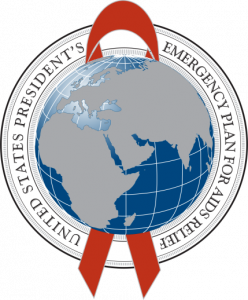
By 2019, more than 700,000 people have died from HIV in the US and 1.2 million people live with HIV in the US.
20102020
2010-2020 - 2010-2020
This decade is characterized by a volley of civil rights progress and setbacks, signifying the persistence of deep clashes in American society. LGBTQIA2S+ people’s liberties become increasingly protected while the Black Lives Matter movement forms in response to anti-Black incidents nationwide. Conversely, several breakthroughs in HIV research, interventions, and strategy bring new energy to the movement, specifically Truvada as PrEP and U=U.
-

2020-Present
2020-Present2020: HHS launches AHEAD: America’s HIV Epidemic Analysis Dashboard, a tool that provides data on the 6 Ending the HIV Epidemic indicators
Rate of HIVrelated deaths among people with HIV in the U.S. fell by nearly half from 2010 to 2017
Ryan White HIV/ AIDS Program (RWHAP) ClientLevel Data Report shows that clients receiving RWHAP medical care were virally suppressed at a record 88.1% in 2019
Say their name: Ahmaud Arberry; Breonna Taylor; George Floyd
Black Trans Lives Matter grows after Rem’mie Fells and Riah Milton are killed
The US Supreme Court blocks an attempt by the Trump administration to end DACA
2021: Kamala Harris is the 1st woman, 1st Asian American, 1st African American to become US Vice President
HIV National Strategic Plan for the United States: A Roadmap to End the Epidemic 2021-2025
FDA approves Cabenuva, the first injectable, extended release, monthly, complete HIV treatment regimen
The US publishes the National HIV/ AIDS Strategy (2022-2025)
FDA approves the first long-acting injectable form of HIV PrEP, Apretude
Juneteenth becomes a federal holiday, celebrating the emancipation of black slaves. The last federal holiday added was MLK Jr Day in 1983.
Stop Asian Hate rallies held in response to violence targeting Asians
June 5, 2021 marks 40 years since the first AIDS case was reported
2022: The Supreme Court officially reversed Roe v. Wade, declaring that the constitutional right to abortion, upheld for nearly a half century, no longer exists.
2020Present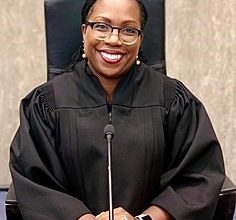
2020-Present - 2020-Present
The gains made during these past decades were overshadowed by a global coronavirus pandemic and calls for social and racial justice. Even in these difficult times, however, the HIV community moved forward with renewed strategies, biomedical innovations, and recognition that health equity needs to be in a priority in any path forward to ending the HIV epidemic. Much of the COVID response relied on the lessons learned from the response to the HIV epidemic.
-
The Future
Present-Future2030: Ending the Epidemic (EHE), plan announced in 2019 that aims to end the HIV epidemic in the United States by 2030
2050: 70 years since the first AIDS case was reported
PresentFuturePresent-Future - The Future
We look forward optimistically towards the end of the HIV epidemic and other conditions that have been impacted by social determinants of health. We are hopeful for systemic and societal changes that support healthy communities.
